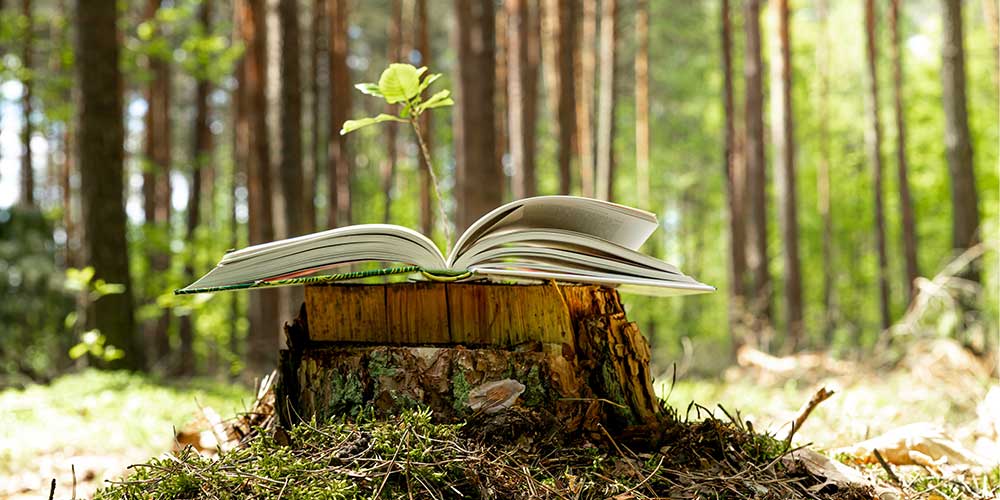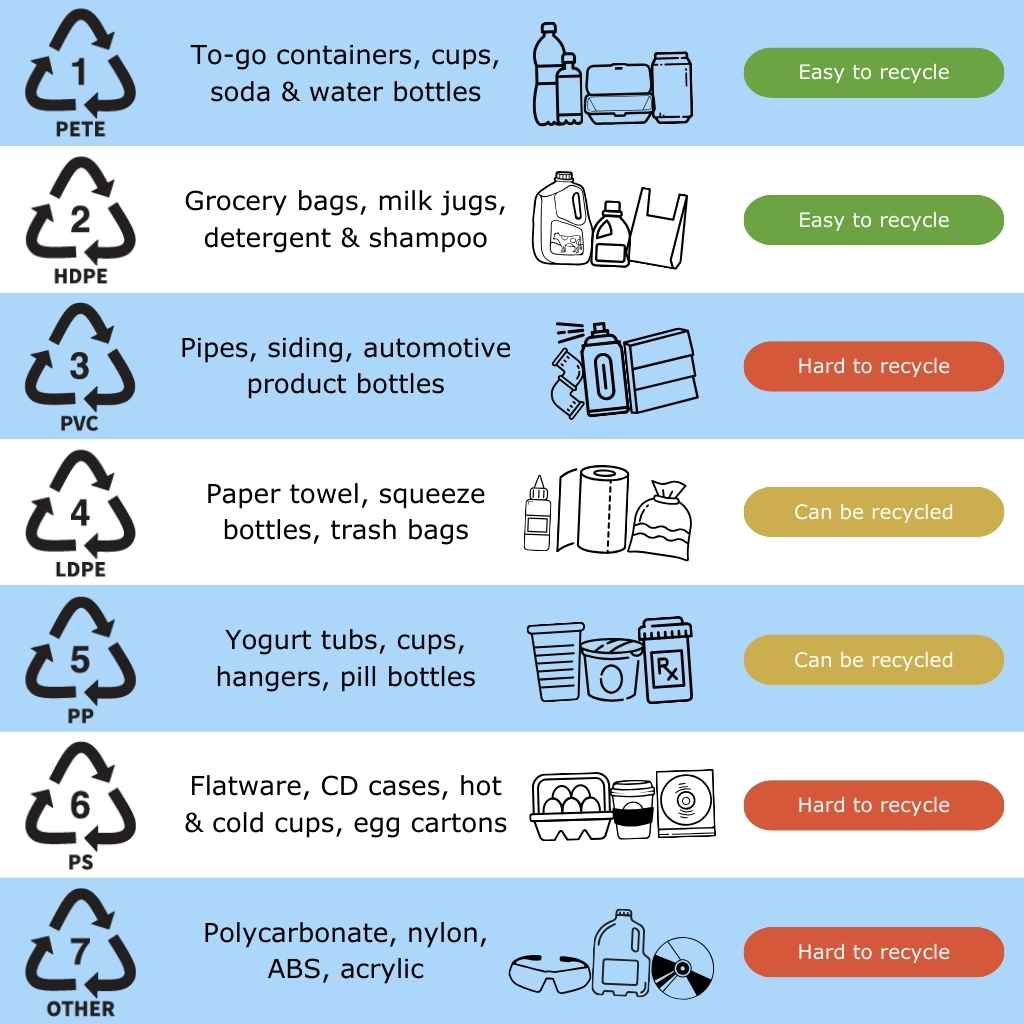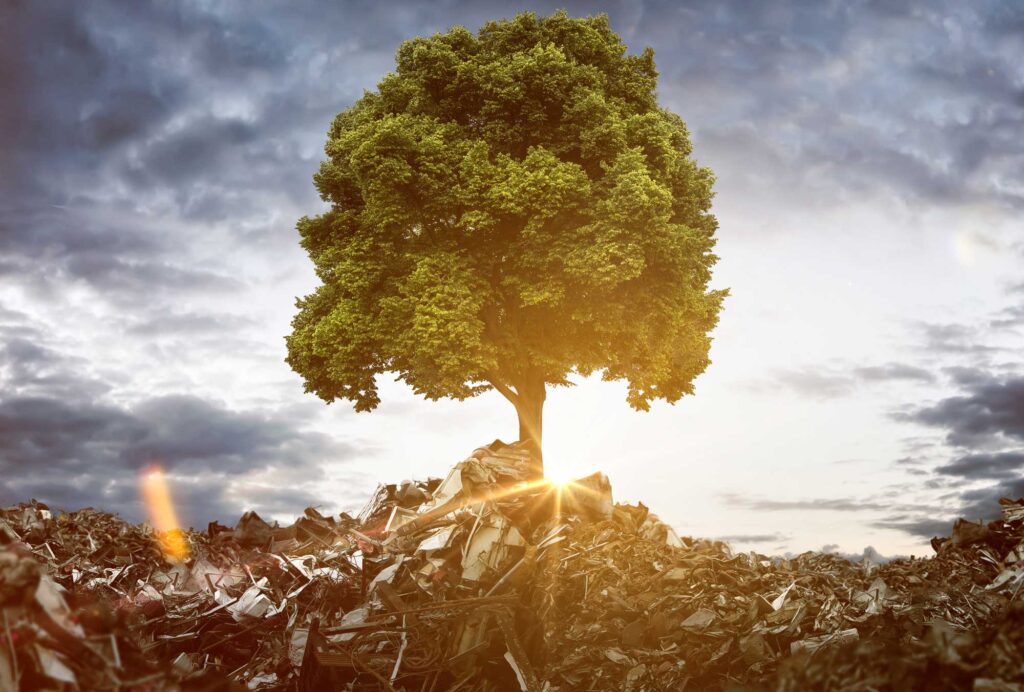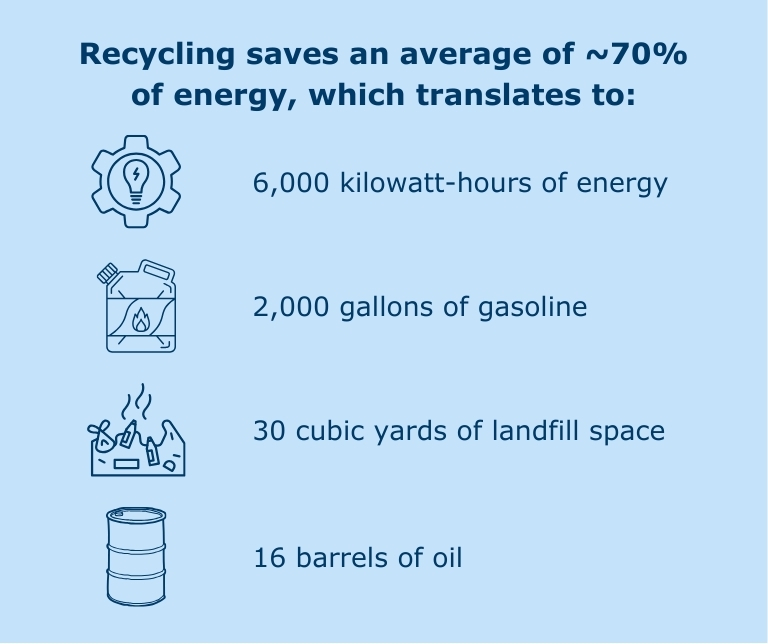
Sustainability is a complex topic and there is not a one-size-fits-all solution. Shorr’s Sustainability Program Manager, Meredith Moore, has compiled and explained some of the most common sustainability myths when it comes to packaging. “These myths are often a form of greenwashing,” where companies deceive consumers with misleading information, images, or language to suggest a product is environmentally friendly when, in fact, it is not.
Myth #1: Are biodegradable products a more sustainable solution?
Companies often market products using terms like “nature”, “bio”, “environmental”, or “biodegradable” as a form of greenwashing. Biodegradable products break down without any indication of the time needed. These products may have detrimental environmental footprints as they are made from fossil fuels and are not necessarily recyclable or compostable, and therefore end up in landfills. Additionally, biodegradable products may hide significant carbon emissions or other environmental impacts associated with their production. Alternatively, look for certified compostable products. This requires the product to break down over a shorter period. Pay attention to whether home composting or an industrial composting facility is required, as not everyone has access to those outlets.
Myth #2: Are fiber-based products, like paper and cardboard, always recyclable?
While paper and cardboard are highly recyclable in a curbside stream, if they are soiled with food or grease, they should be composted. Pizza boxes, napkins, paper towels, and similar items should always be put in the trash bin to avoid contamination, unless industrial composting is available to you.
Myth #3: Are all plastic items marked with the chasing recycling arrows recyclable?
The chasing arrow symbol, typically containing a number inside, is commonly found on plastic items and is often misunderstood as a universal indicator of recyclability. This symbol is part of a “resin identification code” introduced in 1988 to inform consumers about the specific type of plastic used in the item’s production. While initially designed to aid in identifying recyclable plastics, it does not universally signify that an item is recyclable but rather the type of resin used.

Myth #4: Does recycling just end up in the landfill?
While some materials may end up in landfills, largely due to market fluctuations or contamination, most recyclables are successfully processed and sold to domestic buyers. In fact, recycling can be a revenue-generating outlet. There are constant improvements to the sorting processes and recycling infrastructure; recycling correctly generates greater demand and thus funding.
Only an estimated 32% of waste is recycled, with the highest percentages originating from paper recycling. It is also important to consider that not all plastics are created equal when it comes to recyclability: resin codes one, two, and five have the greatest recyclability, while three, four, six, and seven have greater chances of being landfilled. Plastic bags are some of the most found items in recycling streams, and they create tremendous burdens at recycling facilities since they jam equipment. These items should be taken to a store drop-off bin instead of in a curbside bin. Collected recycling that ends in the landfill is often due to contamination – people putting the wrong items into their recycling bins.
Aluminum and glass can be recycled many times without compromising quality, while plastic products decrease in value and quality the more, they are recycled. Plastics are often recycled into food trays, carpets, polyester fabrics for clothing, and packaging products that incorporate recycled content.
At the end of the day, we as consumers must strive to avoid “wish-cycling” – the idea that we put something in the recycling bin with the hope that it gets recycled when it instead contaminates recycling streams and increases the likelihood of more landfilled products.

Myth #5: Is recyclable packaging considered “good enough” and sustainable?
Recyclable packaging is certainly a step in the right direction but should be incorporated as a part of a broader strategy that includes source reduction, product design, reuse, and consideration of recycled content. Simply being recyclable does not guarantee sustainability, as other factors such as recycled content, manufacturing conditions, and end-of-life disposal need to also be considered.
Myth #6: Does everything break down at some point, even in a landfill?
Landfills are not a sustainable solution to our waste management challenges. Not only are they rapidly reaching capacity (and consider the resources needed to construct a new landfill), but they generate methane and pollute water and soil. Did you know that landfills are the third-largest source of human-related methane emissions in the United States, at approximately 15% of total emissions?
Unfortunately, our trash is not “out of sight – out of mind”, and there are no options for it to simply disappear. Waste cannot feasibly break down or decompose in a landfill as there is a lack of oxygen and moisture. And yes, this includes biodegradable products.
Myth #7: Is recycling an expensive economic burden?
Recycling facilities create jobs, stimulate the economy by driving a market for recycled materials, and conserve landfill space and resources. While there are costs associated with recycling programs and infrastructure, they are typically outweighed by the benefits of resource conservation and economic growth. Avoiding waste transportation, landfill maintenance, and new construction enables cost savings and an overall reduction in greenhouse gas emissions.
Myth #8: Does recycling use more energy than it saves?
Recycling can significantly reduce energy consumption. The raw extraction of new, often referred to as “virgin”, materials are resource-intense in energy, water, time, labor, and cost. However, recycling aluminum saves up to 95% of the energy needed to produce new cans. Recycling paper not only saves trees but also uses about 60% less energy than is required for new paper production. Recycling plastic uses an average of 66% less energy than manufacturing new plastic products.

This translates to one ton of recycled plastic saving almost 6,000 kilowatt-hours of energy, up to 2,000 gallons of gasoline, 30 cubic yards of landfill space, and 16 barrels of oil. It is our shared responsibility to ensure all recyclable products end up in the proper recycling bins.
Myth #9: Is compostable packaging “better” than recyclable packaging?
Compostable packaging is well-suited for certain applications, such as food packaging, while non-food packaging is typically better designed with recyclability and reusability in mind. This consensus is supported by environmental organizations, as designing with these two goals in mind helps reduce waste and conserve resources in more situations. Many regions in the United States still do not have access to commercial composting facilities, while recycling facilities (or MRFs – material recovery facilities) are more commonplace. Recyclable packaging should be clearly labeled with the How2Recycle stamp to identify how the package should be disposed of; compostable products should also be certified and labeled appropriately to reduce confusion and avoid contamination.
Ultimately, when deciding which sustainable packaging solution is best for each application, we must consider who the end-user is and where the product will be used and disposed of.
The most sustainable option depends on the specific use case. Ultimately, reducing consumption and increasing recycling rates is crucial for a more sustainable future.

About Shorr Packaging
Shorr Packaging is an industry-leading, award-winning distributor of packaging products, equipment, and services. We represent the best-known packaging product manufacturers and brands in the industry and are one of the largest independent packaging distributors in the nation. Founded in 1922, we are an established, employee-owned company with a long history and success record, all attributed to one simple principle — listen to the customer. To learn more, visit www.shorr.com.
Would you like to learn more about our packaging solutions? Give us a call! (888) 885-0055
Sources
“Diving Deeper Learn More About the How2Recycle Labels.” How2Recycle. https://how2recycle.info/about-the-how2recycle-label/.
Olga, Kachook. “Understanding the Role of Packaging in North America.” Sustainable Packaging Coalition. January, 2021. https://sustainablepackaging.org/wp-content/uploads/2023/07/UnderstandingCompostablePackagingGuide.pdf.
